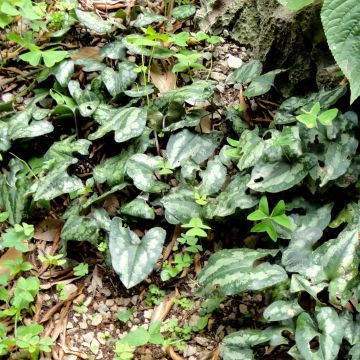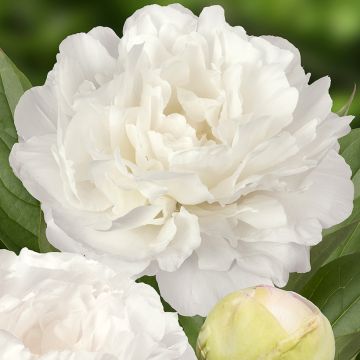

Asarum maximum Ling Ling


Asarum maximum Ling Ling


Asarum maximum Ling Ling


Asarum maximum Ling Ling


Asarum maximum Ling Ling
Asarum maximum Ling Ling
Asarum maximum Ling Ling
Panda Face Ginger
Very small but pretty
Brigitte , 31/05/2025
Special offer!
Receive a €20 voucher for any order over €90 (excluding delivery costs, credit notes, and plastic-free options)!
1- Add your favorite plants to your cart.
2- Once you have reached €90, confirm your order (you can even choose the delivery date!).
3- As soon as your order is shipped, you will receive an email containing your voucher code, valid for 3 months (90 days).
Your voucher is unique and can only be used once, for any order with a minimum value of €20, excluding delivery costs.
Can be combined with other current offers, non-divisible and non-refundable.
Home or relay delivery (depending on size and destination)
Schedule delivery date,
and select date in basket
This plant carries a 12 months recovery warranty
More information
We guarantee the quality of our plants for a full growing cycle, and will replace at our expense any plant that fails to recover under normal climatic and planting conditions.

Would this plant suit my garden?
Set up your Plantfit profile →
Description
Asarum maximum 'Ling Ling' is a very beautiful variety of giant ginger also commonly known as 'Panda Face' Wild Ginger due to its round black-and-white flowers that resemble the cute face of a panda. This superb Chinese selection develops ample, shiny, marbled foliage that blends several shades of green, hiding its adorable flowering in spring. Evergreen in winter and hardy down to -8 °C (17.6 °F), this shade-loving perennial creates a sumptuous ground cover in light woodland and in cool soil. A beautiful and rare plant that will delight collectors!
Sometimes called Wild Ginger due to the spicy and lemony scent detected when crushing its leaves or roots, Asarum maximum 'Ling Ling' was selected in the Chinese provinces of Hubei and Sichuan, specifically in low-altitude moist mountain forests. It belongs to the Aristolochiaceae family, with no relation to ginger. While its cousins, the aristolochias, climb the branches of trees in tropical or Mediterranean regions, giant ginger spreads out in the shade of the undergrowth, forming a 10 to 20 cm (4 to 8 in) high carpet and spreading thanks to its rhizomatous roots. Its evergreen leaves resemble those of cyclamens. They are 15 cm (6 in) long, heart-shaped, and arranged in tufts near the ground. Completely marbled and spotted with apple-green, medium green and darker green, and highlighted by a silver halo, their epidermis beautifully reflects the light. From March to May, fairly large bell-shaped flowers appear; these are fascinating but somewhat hidden under the leaves. They have three velvety petals that contrast sharply: black in colour, illuminated by a large white basal spot, around a black throat.
The 'Ling Ling' Giant Ginger will make an excellent ground cover in the undergrowth of regions that are not too cold and that are well watered all year round. It will appreciate shaded exposures and humus-rich, well-drained soils with an acidic tendency, and will blend beautifully with other shade-loving perennials such as Sanguinaria, Achimenes, Syneilesis, and Rohdea, or ferns. It is a hardy plant, and its foliage will remain evergreen even at quite low temperatures, especially if protected by a thick blanket of snow. It can easily be adopted in a pot to admire it up close and closely monitor attacks from gastropods that love its young shoots.
Report an error about the product description
Asarum maximum Ling Ling in pictures




Flowering
Foliage
Plant habit
Botanical data
Asarum
maximum
Ling Ling
Aristolochiaceae
Panda Face Ginger
China
Other Asarum
View all →Planting and care
Plant Asarum maximum Ling Ling in autumn or spring, in shade or partial shade in light, humus-rich soil with a tendency towards acidity, always keeping it moist during summer. Wild ginger is frost-resistant, and can withstand temperatures down to at least -12 °C (10.4 °F), and even more with a blanket of leaves or a snowy carpet. Make sure to water it regularly during the first year of growth, especially during dry periods, to promote its establishment.
- Able to compete with roots, it can be planted at the base of spring shrubs, as long as the soil does not dry out too much.
- Protect the stump with dead leaves in cold regions where snow does not provide natural protection.
- Beware of slugs and snails that love young shoots.
Planting period
Intended location
Care
-
, onOrder confirmed
Reply from on Promesse de fleurs
Similar products
Haven't found what you were looking for?
Hardiness is the lowest winter temperature a plant can endure without suffering serious damage or even dying. However, hardiness is affected by location (a sheltered area, such as a patio), protection (winter cover) and soil type (hardiness is improved by well-drained soil).

Photo Sharing Terms & Conditions
In order to encourage gardeners to interact and share their experiences, Promesse de fleurs offers various media enabling content to be uploaded onto its Site - in particular via the ‘Photo sharing’ module.
The User agrees to refrain from:
- Posting any content that is illegal, prejudicial, insulting, racist, inciteful to hatred, revisionist, contrary to public decency, that infringes on privacy or on the privacy rights of third parties, in particular the publicity rights of persons and goods, intellectual property rights, or the right to privacy.
- Submitting content on behalf of a third party;
- Impersonate the identity of a third party and/or publish any personal information about a third party;
In general, the User undertakes to refrain from any unethical behaviour.
All Content (in particular text, comments, files, images, photos, videos, creative works, etc.), which may be subject to property or intellectual property rights, image or other private rights, shall remain the property of the User, subject to the limited rights granted by the terms of the licence granted by Promesse de fleurs as stated below. Users are at liberty to publish or not to publish such Content on the Site, notably via the ‘Photo Sharing’ facility, and accept that this Content shall be made public and freely accessible, notably on the Internet.
Users further acknowledge, undertake to have ,and guarantee that they hold all necessary rights and permissions to publish such material on the Site, in particular with regard to the legislation in force pertaining to any privacy, property, intellectual property, image, or contractual rights, or rights of any other nature. By publishing such Content on the Site, Users acknowledge accepting full liability as publishers of the Content within the meaning of the law, and grant Promesse de fleurs, free of charge, an inclusive, worldwide licence for the said Content for the entire duration of its publication, including all reproduction, representation, up/downloading, displaying, performing, transmission, and storage rights.
Users also grant permission for their name to be linked to the Content and accept that this link may not always be made available.
By engaging in posting material, Users consent to their Content becoming automatically accessible on the Internet, in particular on other sites and/or blogs and/or web pages of the Promesse de fleurs site, including in particular social pages and the Promesse de fleurs catalogue.
Users may secure the removal of entrusted content free of charge by issuing a simple request via our contact form.
The flowering period indicated on our website applies to countries and regions located in USDA zone 8 (France, the United Kingdom, Ireland, the Netherlands, etc.)
It will vary according to where you live:
- In zones 9 to 10 (Italy, Spain, Greece, etc.), flowering will occur about 2 to 4 weeks earlier.
- In zones 6 to 7 (Germany, Poland, Slovenia, and lower mountainous regions), flowering will be delayed by 2 to 3 weeks.
- In zone 5 (Central Europe, Scandinavia), blooming will be delayed by 3 to 5 weeks.
In temperate climates, pruning of spring-flowering shrubs (forsythia, spireas, etc.) should be done just after flowering.
Pruning of summer-flowering shrubs (Indian Lilac, Perovskia, etc.) can be done in winter or spring.
In cold regions as well as with frost-sensitive plants, avoid pruning too early when severe frosts may still occur.
The planting period indicated on our website applies to countries and regions located in USDA zone 8 (France, United Kingdom, Ireland, Netherlands).
It will vary according to where you live:
- In Mediterranean zones (Marseille, Madrid, Milan, etc.), autumn and winter are the best planting periods.
- In continental zones (Strasbourg, Munich, Vienna, etc.), delay planting by 2 to 3 weeks in spring and bring it forward by 2 to 4 weeks in autumn.
- In mountainous regions (the Alps, Pyrenees, Carpathians, etc.), it is best to plant in late spring (May-June) or late summer (August-September).
The harvesting period indicated on our website applies to countries and regions in USDA zone 8 (France, England, Ireland, the Netherlands).
In colder areas (Scandinavia, Poland, Austria...) fruit and vegetable harvests are likely to be delayed by 3-4 weeks.
In warmer areas (Italy, Spain, Greece, etc.), harvesting will probably take place earlier, depending on weather conditions.
The sowing periods indicated on our website apply to countries and regions within USDA Zone 8 (France, UK, Ireland, Netherlands).
In colder areas (Scandinavia, Poland, Austria...), delay any outdoor sowing by 3-4 weeks, or sow under glass.
In warmer climes (Italy, Spain, Greece, etc.), bring outdoor sowing forward by a few weeks.













































